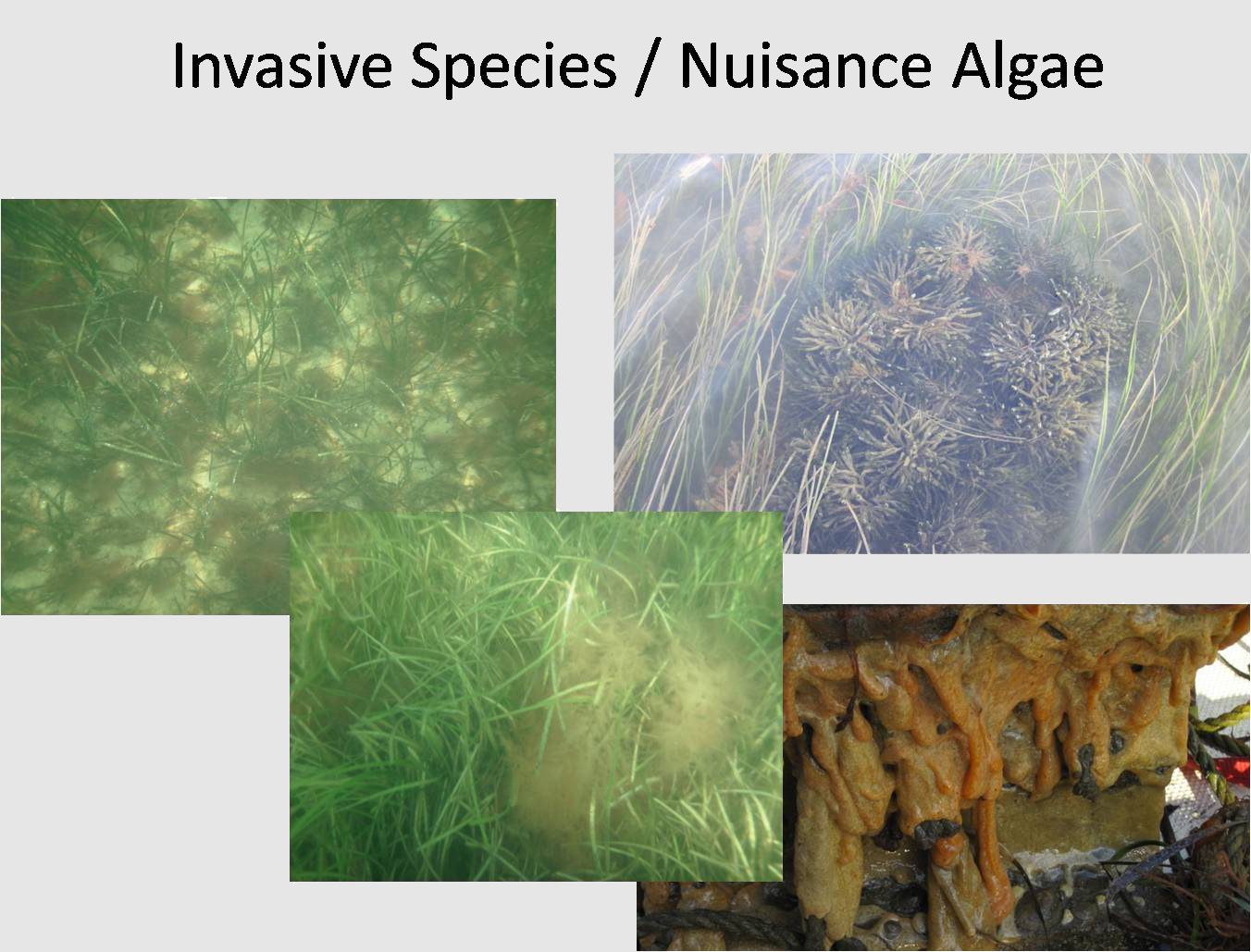Threats to Eelgrass
Mooring Chain Scars

The circular bare patches in the aerial image taken of Provincetown Harbor occur when the heavy chain attached to boat moorings drags around the mooring, denuding the area of eelgrass. The second photograph shows an underwater view of a mooring scar with a mooring chain lying in a bare, sandy area surrounded by eelgrass.
Marine Invasive Species and Nuisance Algae
Several species of algae compete with eelgrass for habitat, light, and nutrients. Tunicates and other encrusting marine invertebrates can also destroy eelgrass habitat. They are often agressive, fast-growing species, and once they become established, will often dominate the area, overgrowing and shading out eelgrass. Some of the invasive species we have documented in Cape Cod Bay include Codium fragile, Botryllus schlosseri, Botrilloides violaceus, Styella clava, and Didemnum sp.
Commercial Fishing

Some methods of commercial shellfishing, such as hydrauic clamming, can destroy eelgrass habitat. Although it is illegal to employ this method of shellfishing in areas colonized by eelgrass, these photographs show evidence that these laws aren’t always obeyed.

Our Work
Humpback Whale Research
Right Whale Research
Marine Animal Entanglement Response
Marine Geology Department
Water Quality Monitoring Program
Marine Fisheries Research
Seal Research
Shark Research
Marine Education
Interdisciplinary
Marine Debris and Plastics Program
Marine Policy Initiative
Cape Cod Climate Change Collaborative
Publications


